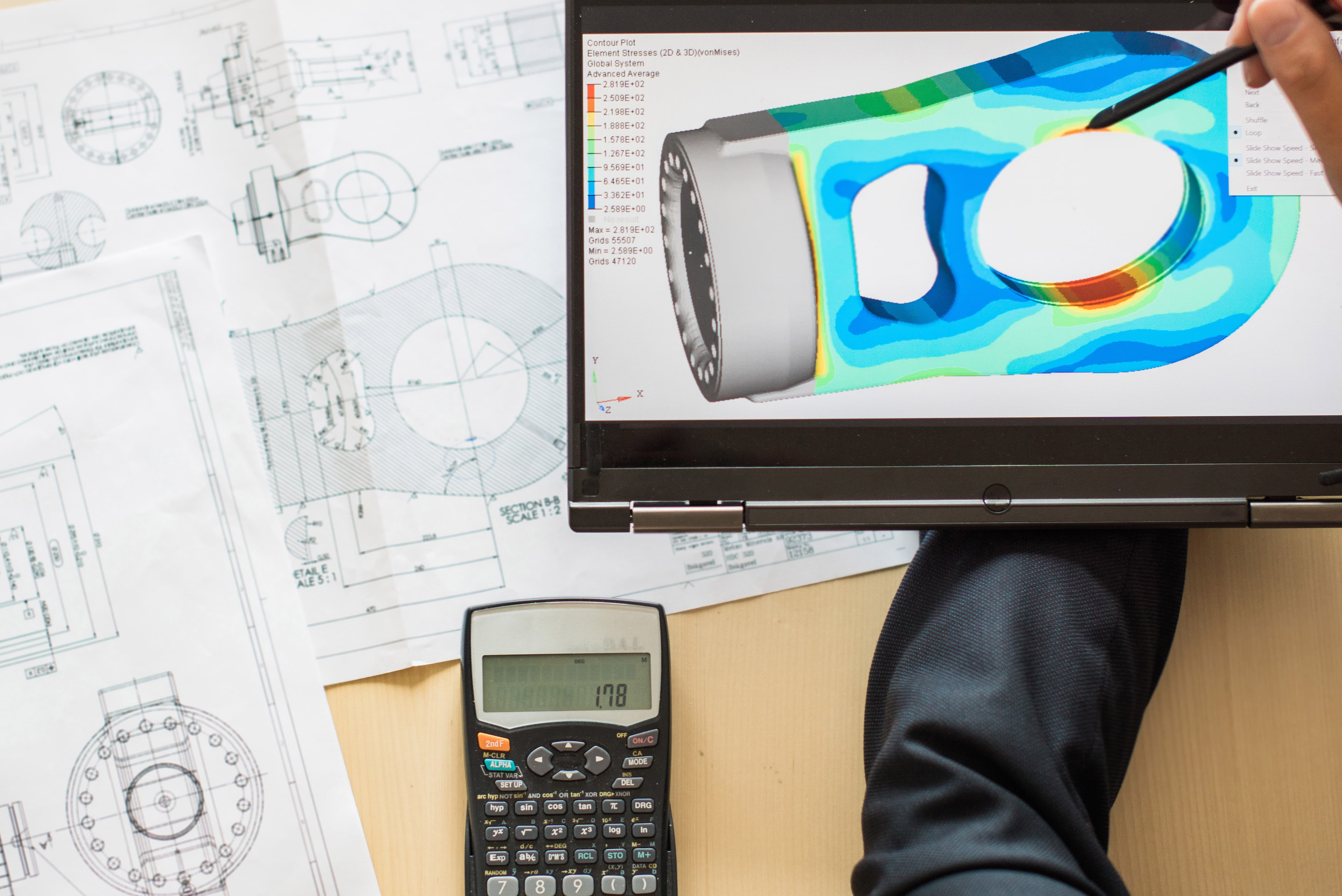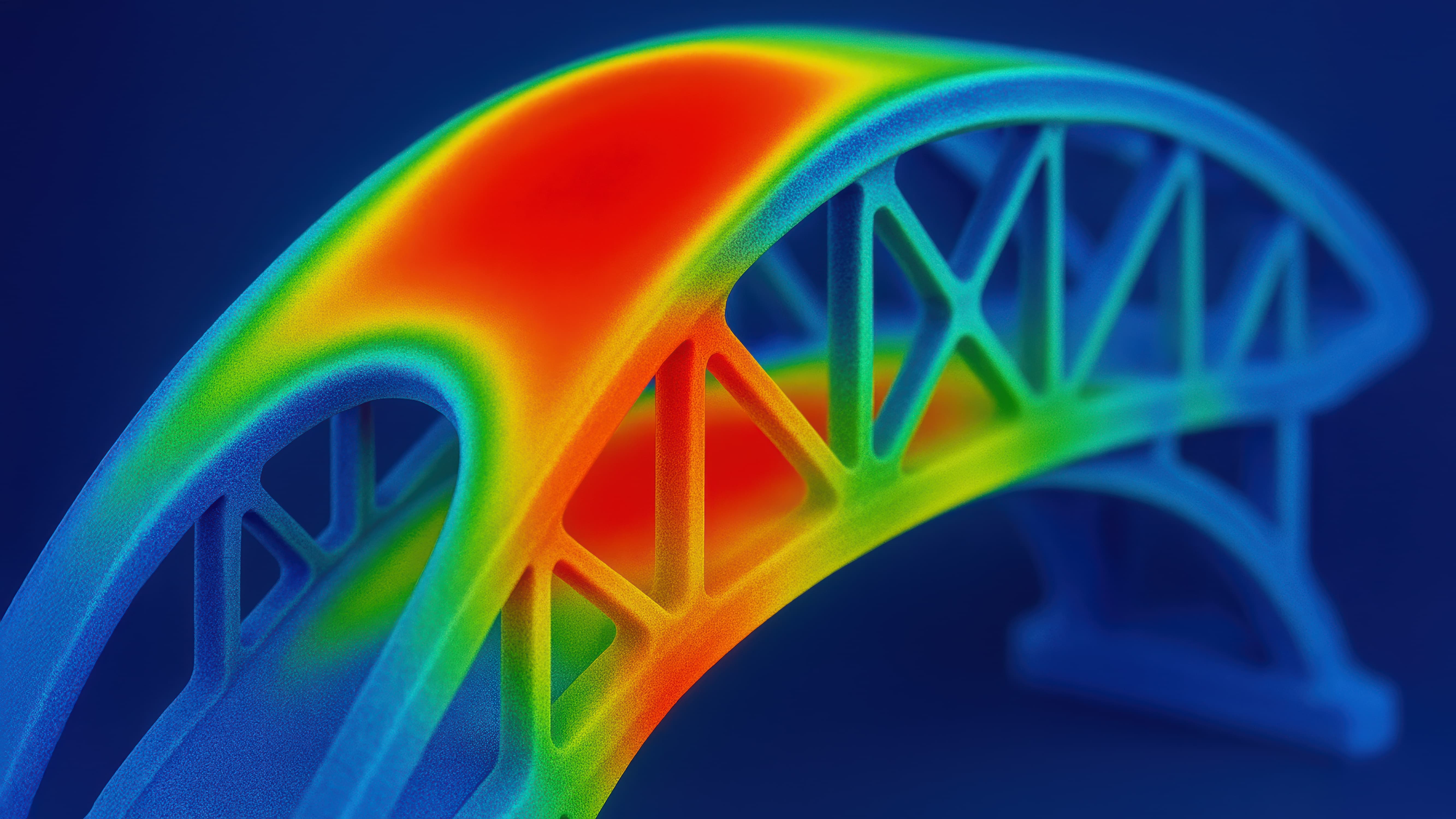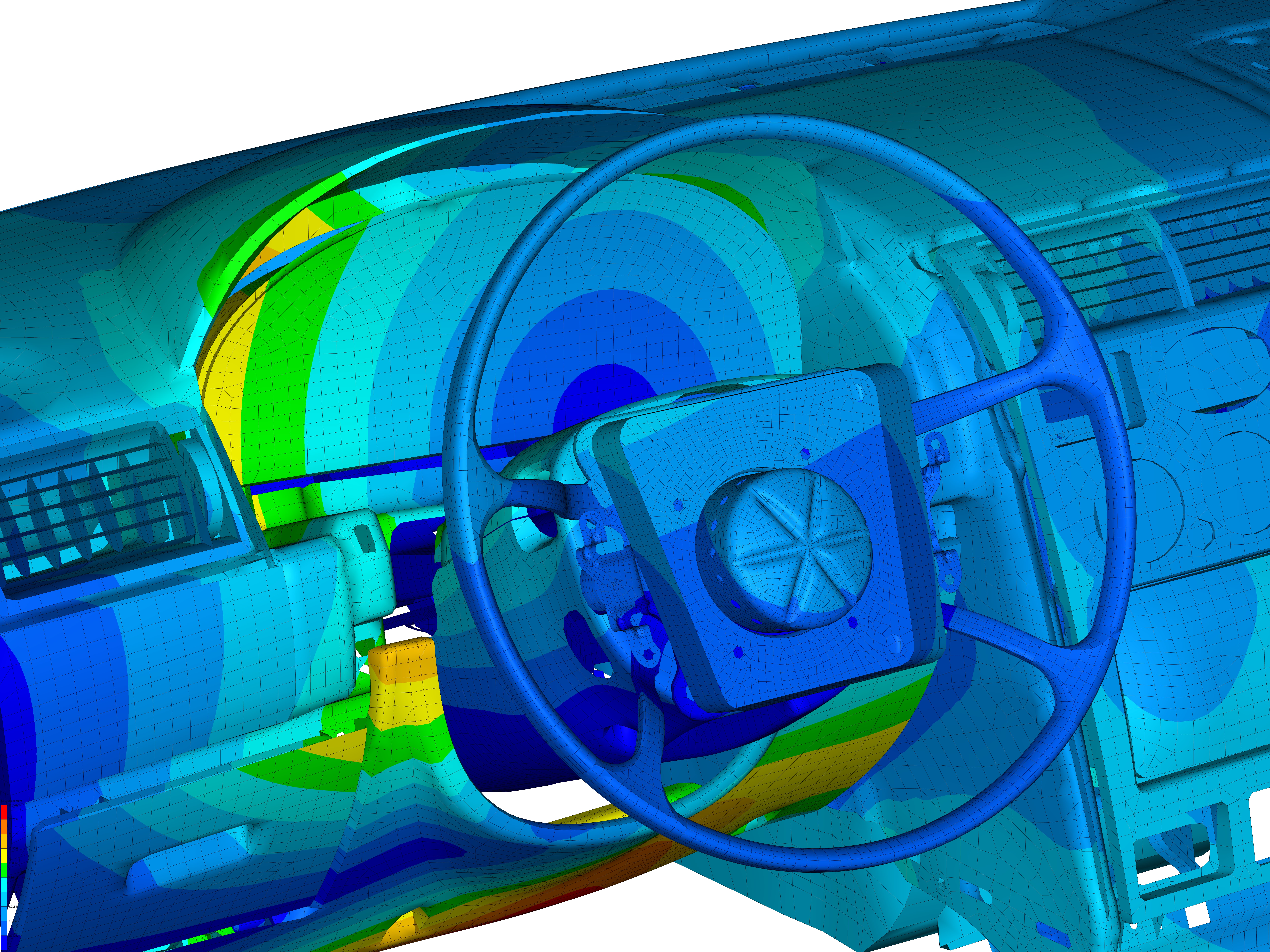
HOOPS Solve is an SDK that accelerates the implementation of CAE simulation applications by providing a developer-friendly framework to both define and solve FEM models.
Whether you’re building an FEM application from scratch or optimizing an existing application, HOOPS Solve provides you with a framework and linear algebra applications created specifically for CAE application development. Even if you don’t rely on HOOPS Solve to build your local matrices, its SMP direct and iterative linear solvers, along with its eigensolvers, deliver the CPU performance you need.

Features & Benefits
HOOPS Solve fast-tracks FEM development and accelerates your solver.
Off-the-shelf calculation of local matrices and vectors for standard structural and thermal analysis, connected to a broad and user-expandable material model library.
Proprietary high-performance SMP multifrontal sparse linear solving, including optimized functions for multiple right-hand side resolution on the same matrix and threaded I/O for out-of-core operation.
Proprietary iterative preconditioned conjugate gradient and GMRES solvers to tackle both symmetric and non-symmetric systems.
Proprietary eigensolvers to address specific eigenvalue problems: Lanczos or Automated Multilevel Substructuring to extract normal modes of vibration, and a subspace algorithm generally used to determine buckling modes.
HOOPS Solve’s local element contribution capabilities offer out-of-the-box matrix and vector calculations for linear and parabolic 2D and up to cubic 3D FEA elements.
You don’t need to utilize the element framework to benefit from the speed of our high-performance algebra solvers.
Our framework supports a wide range of element types, including:
solids, shells, membranes, beams, trusses, interfaces, contact elements, springs, dashpots, and concentrated masses. Multipoint constraints are automatically handled.
Whether you're using built-in material models or custom ones, HOOPS Solve supports both linear and nonlinear behaviors, giving you maximum flexibility.

For applications that don’t need to build an FEA solver, but do need FEA results as an input, HOOPS Solve can act as a full-featured FEA application. This provides the benefits of being easily integrable and avoiding cumbersome file-based data transfers to external solvers.

HOOPS Solve works behind the scenes of major industry-standard CAE packages, providing established performance on shared-memory parallel architectures.
The solvers use a coarse-grained data distribution strategy and make extensive use of optimized BLAS libraries for low-level operations.
What truly sets HOOPS Solve apart is its focus on smart data management, multithreading, memory efficiency, and a continuous pursuit to maximize CPU performance.



HOOPS Solve is Just the Beginning
Learn more about the full suite of Tech Soft 3D CAE products.
Case Studies
Blogs
Frequently Asked Questions (FAQ)
HOOPS Solve is a software development kit (SDK) designed for engineers and scientists who need high-performance solvers for finite element analysis (FEA) and computational fluid dynamics (CFD). It enables developers to embed advanced simulation capabilities into their own applications.
Yes, you can gain benefits from using HOOPS Solve even if you already have an FEA solver. By itself, HOOPS Solve can act as a full FEA application, allowing you to avoid file-based data transfers to external solvers.
CEETRON Solve is now HOOPS Solve.
The CEETRON SDKs have been rebranded as part of the HOOPS product family. While the name has changed, the SDKs continue to deliver the same trusted CAE performance, features, and capabilities. This rebrand brings our technology under a single, unified HOOPS brand. Learn more in our official blog post [LINK].
HOOPS Solve is part of Tech Soft 3D’s SDK suite for building CAE and simulation applications. It works seamlessly with companion toolkits to create end-to-end engineering workflows:
HOOPS Exchange – Imports and exports CAD data into your application, which can then be prepped for simulation and solved with HOOPS Solve.
HOOPS Access – Handles import and export of CAE and simulation data for interoperability across multiple solvers and formats.
HOOPS Envision – Visualizes and reports on solver results, providing interactive graphics and insights.
HOOPS Mesh – Generates reliable meshes to ensure stable and accurate finite element analysis.
Polygonica – Cleans, heals, and prepares geometry so models are ready for meshing and solving.
Together, these SDKs give developers a complete, interoperable toolset for CAD-to-simulation-to-visualization workflows.
Yes, we offer a free, 60-day evaluation period so you can test HOOPS Solve and even build an early proof-of-concept. With our free trial, you get full access to HOOPS Solve with the added support of our technical experts. You can start your free trial at manage.techsoft3d.com.
The Tech Soft 3D Product Forum offers a knowledge base and a platform for asking any questions you may have. Our community is dedicated to helping you.






